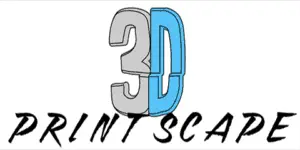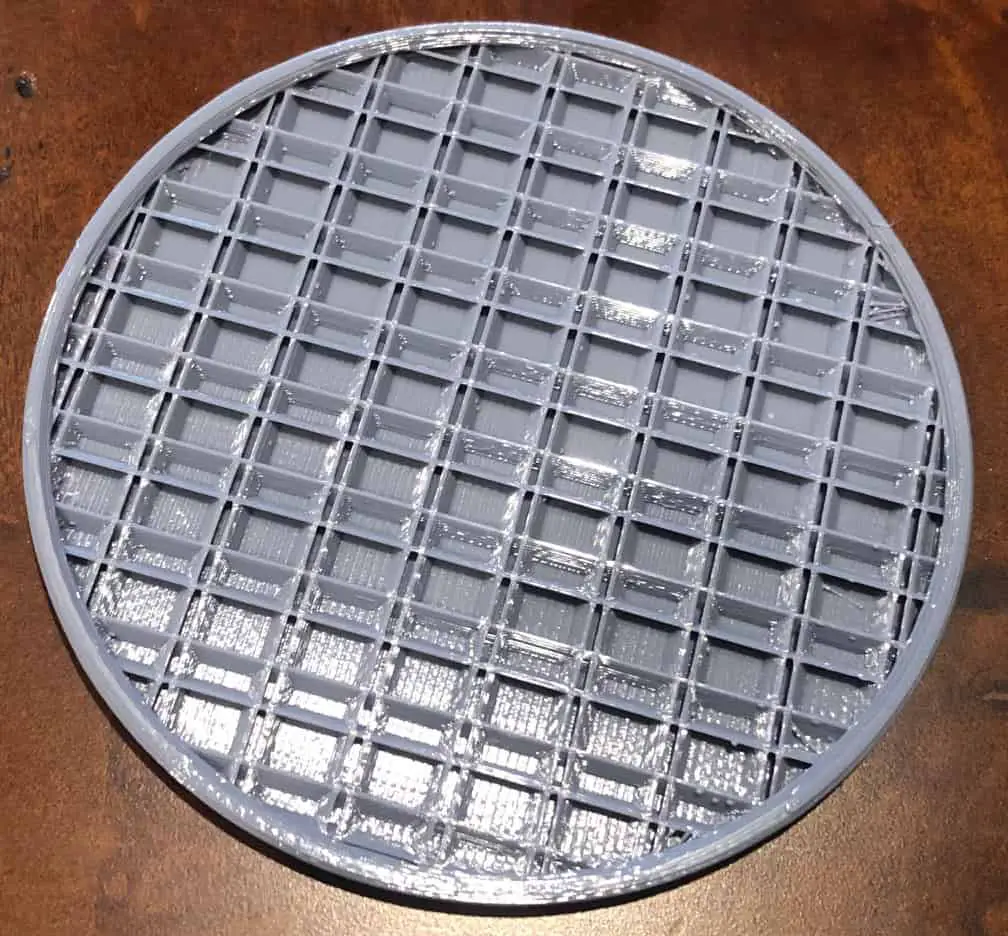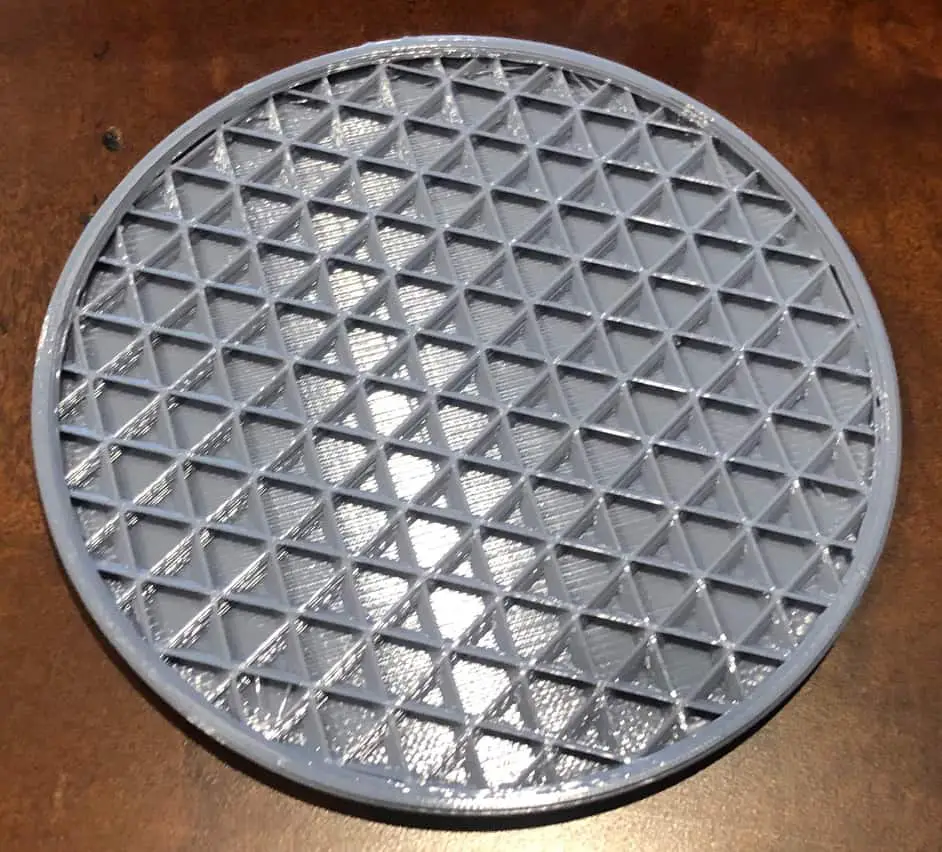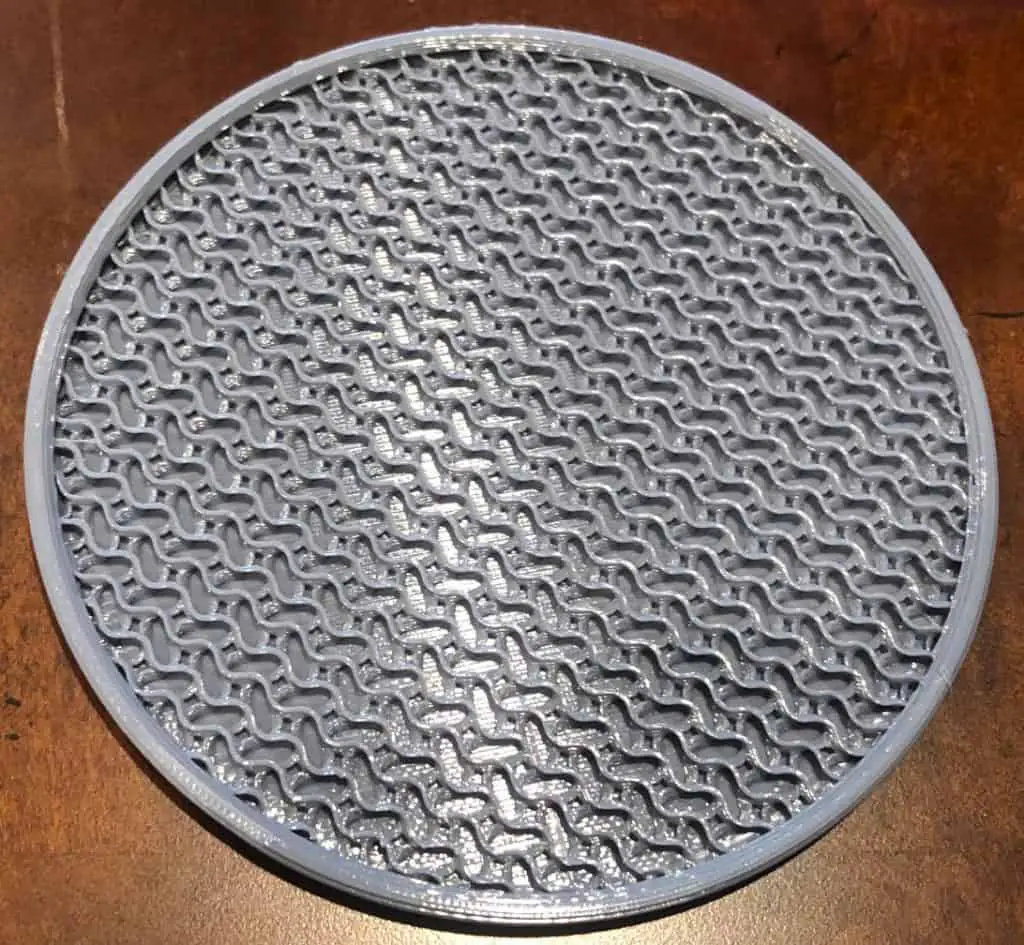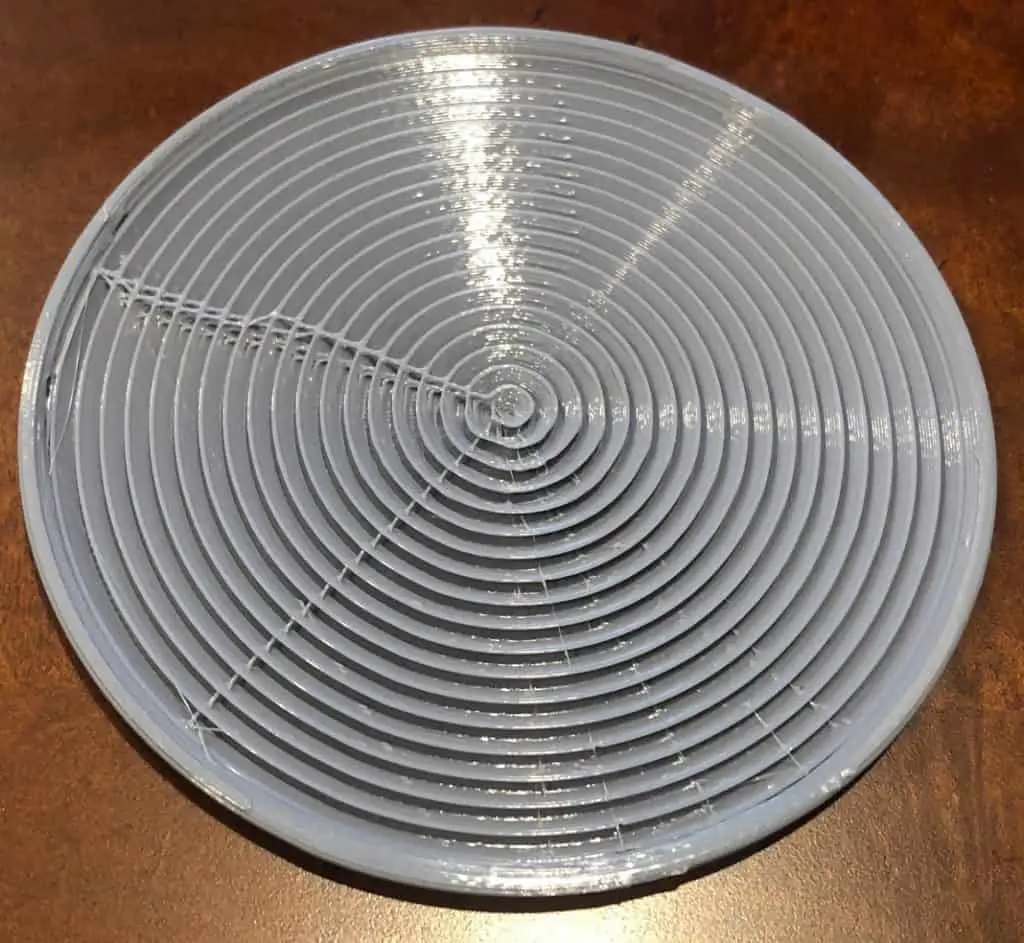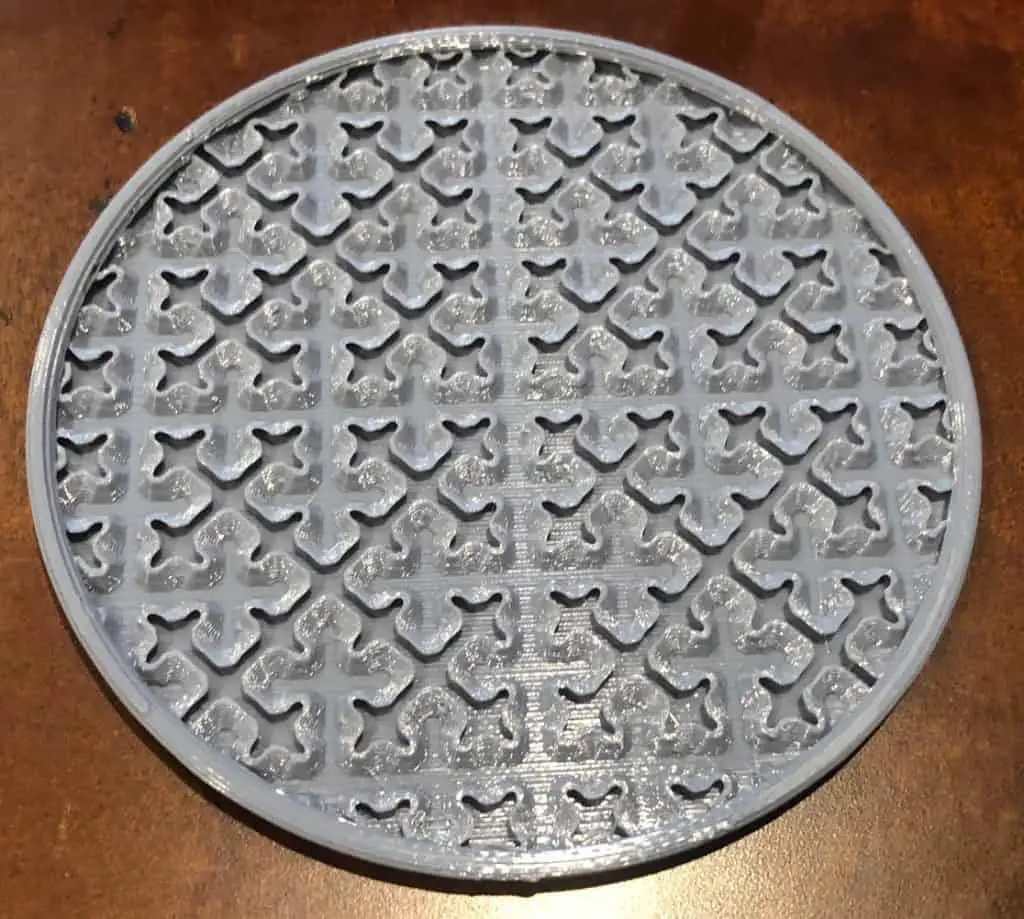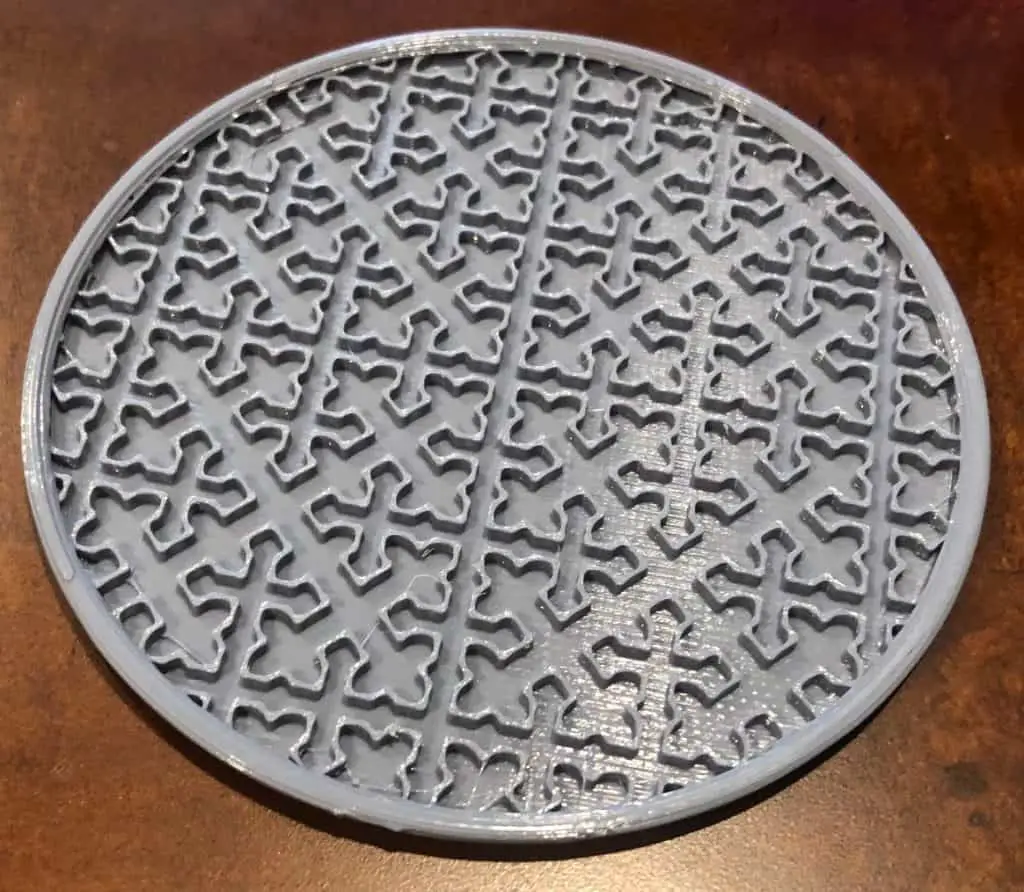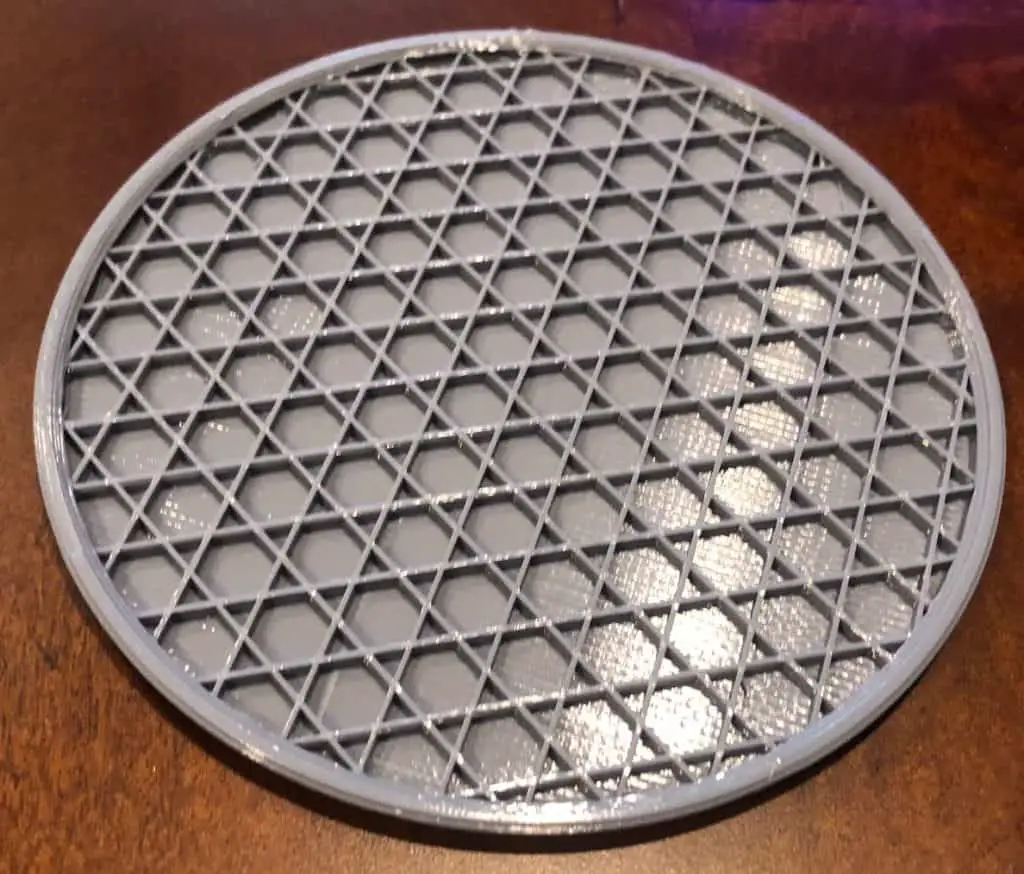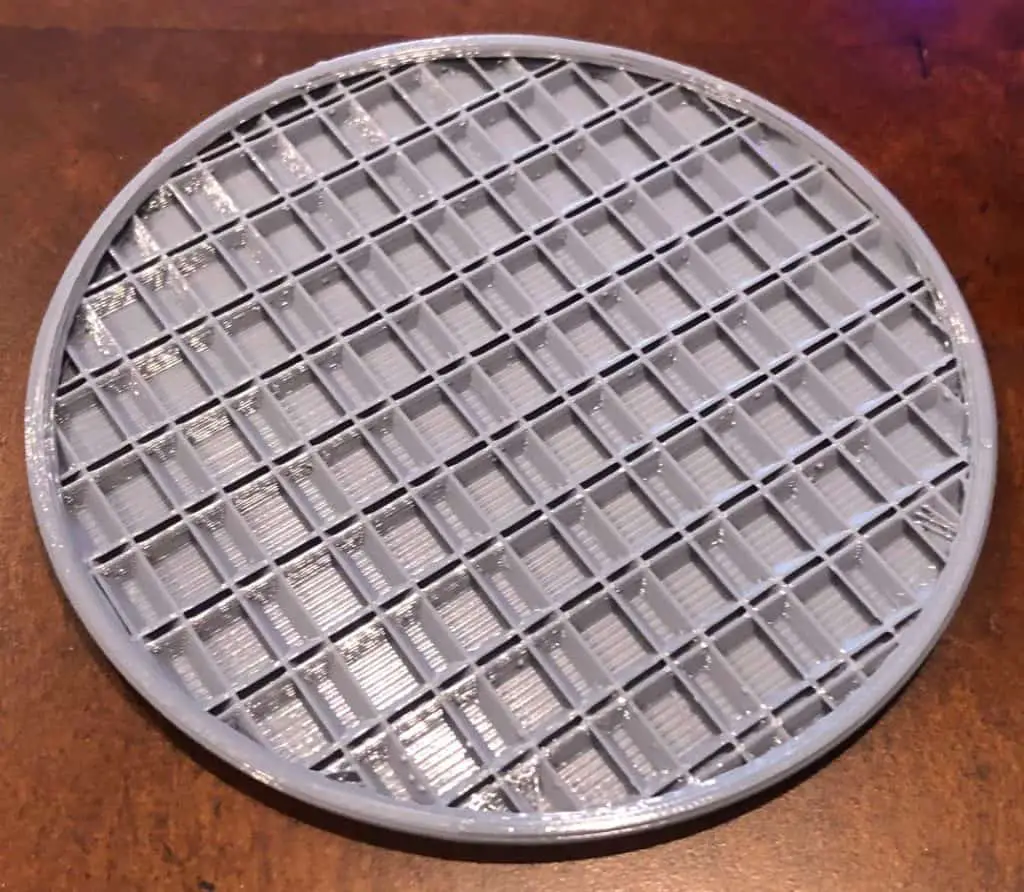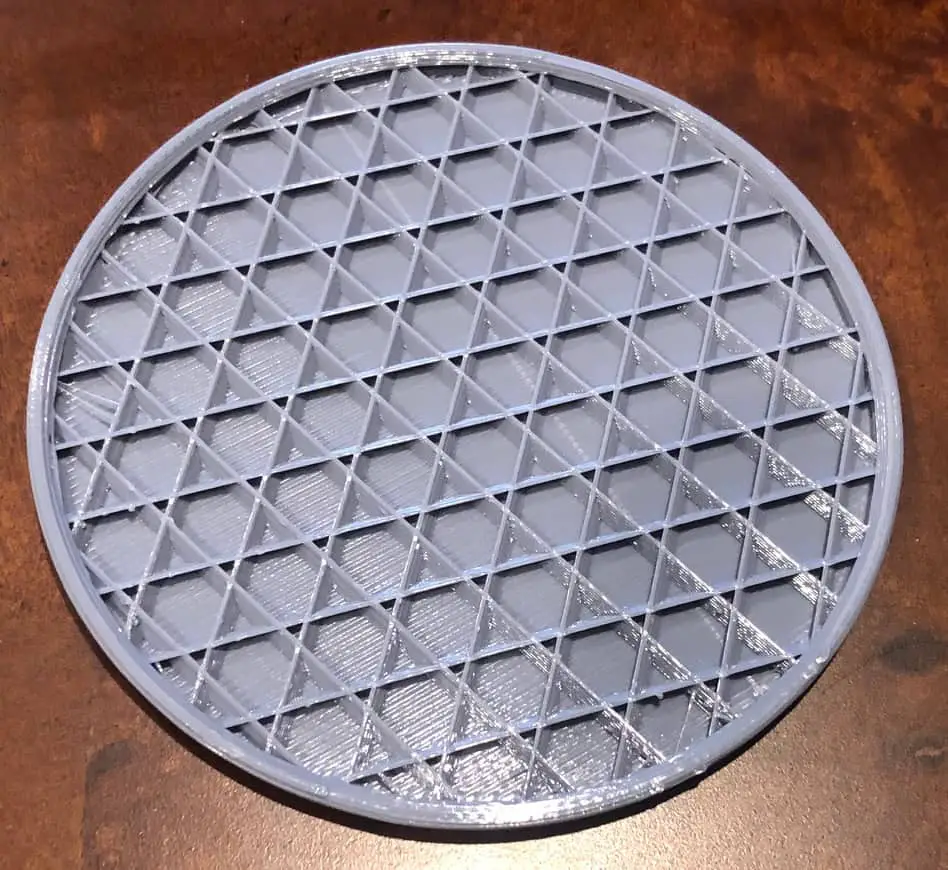Depending on what you’re printing, there are a few infill patterns that are considered to be the strongest overall. Some patterns are the strongest on the Z plane while others are equally strong throughout all planes.
Triangles is the strongest infill pattern, its perpendicular failure load is one of the strongest at 358kg. The Rectilinear, Grid, Cubic, Honeycomb, and Gyroid infill patterns are also very strong. The cubic infill pattern is the strongest infill for transverse failure loads and took 270kg before breaking.
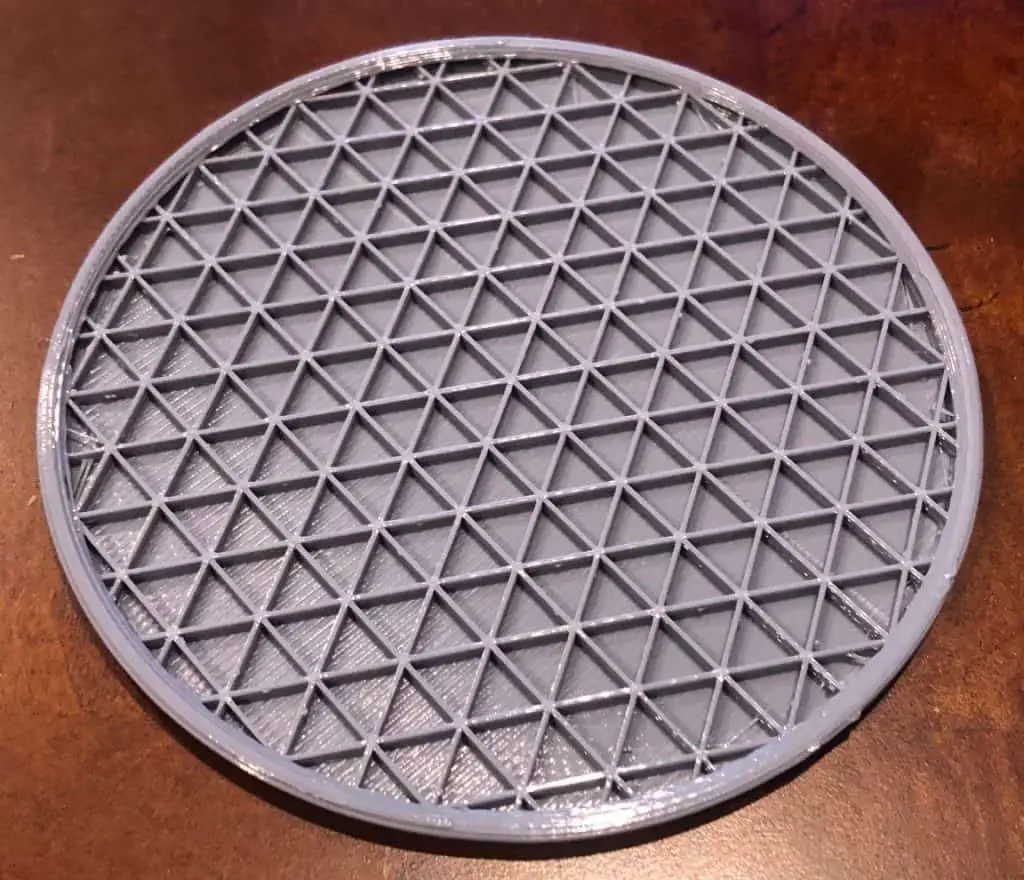
A perpendicular failure load is a force that pushes from the top and bottom of the part. (Squeezing the part) A transverse load is when there’s a force pushing in from the sides of the pattern. This means that a perpendicular force is a load that puts stress on the Z plane and a transverse load puts stress on the X and Y plane.
As you’ll notice as you look over the results in the table below, most patterns are stronger throughout the Z plane and weaker throughout the X and Y planes.
| Infill Pattern | Perpendicular Failure Load | Transverse Failure Load |
|---|---|---|
| Rectilinear | 305kg | 195kg |
| Grid | 354kg | 203kg |
| Triangle | 358kg | 239kg |
| Cubic | 260kg | 270kg |
| Line | 339kg | 207kg |
| Honeycomb | 343kg | 193kg |
| 3D Honeycomb | 276kg | 230kg |
| Gyroid | 260kg | 260kg |
You can see that all the patterns have a higher perpendicular strength except for the gyroid and cubic patterns. This is because these two patterns are equal on all planes, so they can withstand the same force from all directions.
According to this data, the triangle infill pattern is the strongest in terms of perpendicular force and the cubic pattern has the highest transverse failure load of 270kg.
Now, let’s look at the average weight these patterns can support by dividing the two loads by each other. The reason this is important is that many 3D parts will be subjected to forces from different directions and this gives us an all-around strength. This time I’ll list the patterns in order from weakest to strongest.
| Infill Pattern | Average Load |
|---|---|
| Rectangular | 250kg |
| 3D Honeycomb | 253kg |
| Gyroid | 260kg |
| Cubic | 265kg |
| Honeycomb | 268kg |
| Line | 273kg |
| Grid | 278kg |
| Triangle | 298kg |
The data indicates that the triangle pattern is the strongest with the grid pattern not far behind.
Gyroid Infill Pattern
The gyroid pattern is not the strongest, but it does offer around the same strength as the honeycomb pattern without causing as much printer wobble. So for parts that need to be strong on all three-dimensional planes, I suggest using gyroid instead of honeycomb. But for absolute strength, it’s better to use a triangle or grid patterns.
What Is The Strongest 100% Infill Pattern?
Rectangular is the strongest 100% infill pattern because of the way it’s created. This pattern consists of parallel and perpendicular lines which form a grid that can fill the part completely. Other patterns are likely to leave gaps within the infill even at 100%.
I highly recommend avoiding 100% infill as even a small amount of over-extrusion can create total print failures at this density. 90% infill is about the highest value that won’t cause other issues.
How Strong Is 20% Infill
A 20% infill is strong enough for all parts that aren’t functional. Meaning they won’t be used to hold any weight or pressure. At this infill percentage, you’ll be able to print figurines, cosplay pieces, and all other non-functional parts.
So for stronger parts, you can increase the infill percentage. But keep in mind that the infill percentage is not directly proportionate to the part’s strength. For example, an increase from 50% to 75% infill will yield a 10% increase in strength. This is partly due to the fact that the shell thickness plays a part in the total strength, but there are other factors as well.
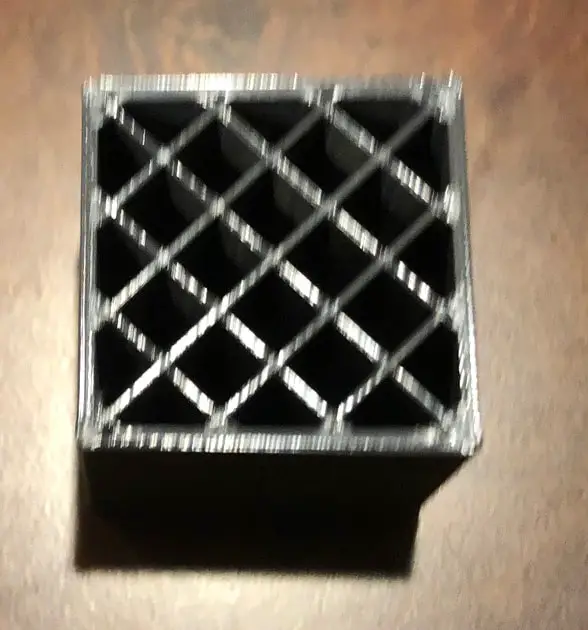
Is Higher Infill Stronger?
A higher infill will result in a stronger part. For this reason, I suggest printing functional parts like shelving brackets at 50 to 90% infill. This will also allow you to turn screws into the part without the thread losing its grip.
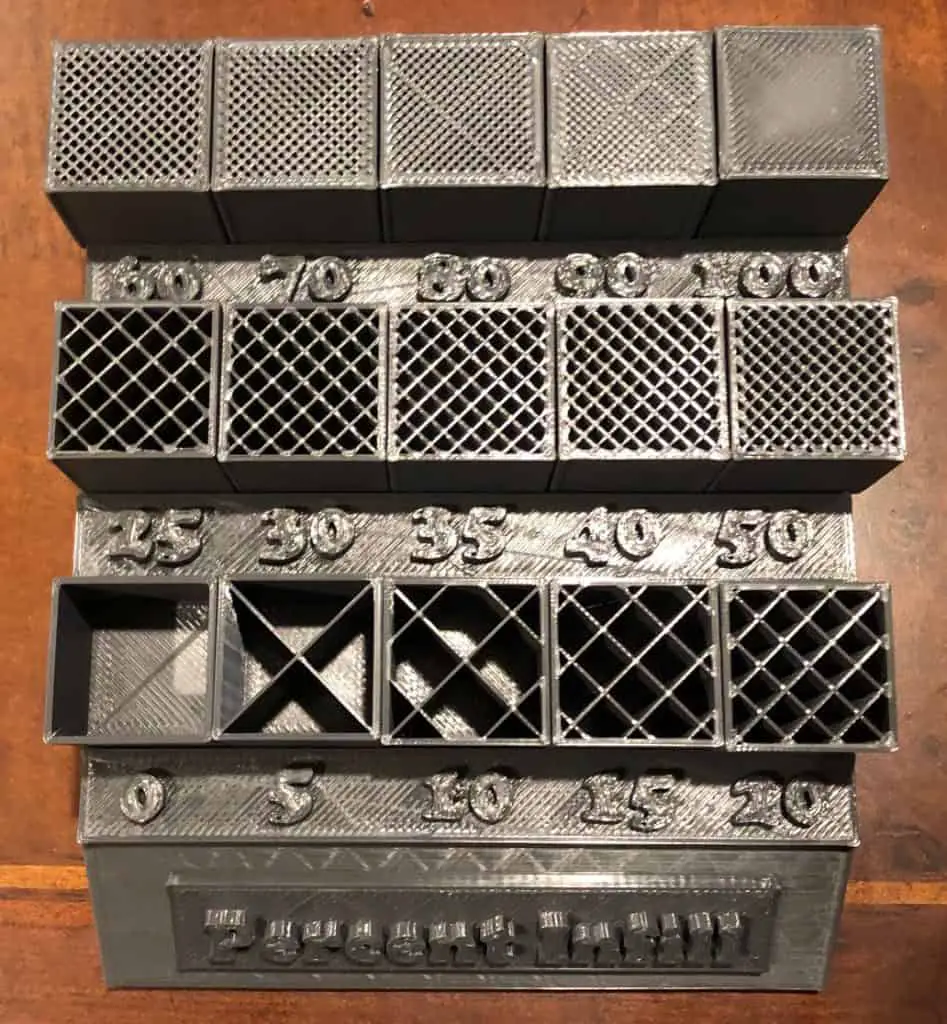
Infill VS Shell Strength
Increasing the shell thickness (wall perimeters) is a more economical way of adding strength to your 3D printed parts. Adding 100 grams of material to the shell will make the part stronger than if you add 100 grams of material to the infill.
For functional parts that need to be very strong, I find that 50% infill and around 4 wall perimeters work well and doesn’t use too much filament. It’s also strong and dense enough for screws to turn into and grip on.
What Layer Height Is The Strongest?
Layer heights of 0.6 to 0.15mm are the strongest according to a study done by researchgate.net.
For this study, nozzle diameters of 0.8, 0.6, and 0.4mm were used to print layer heights ranging from 0.06 to 0.45mm and then strength tested. On all the nozzle sizes, the strength of the part decreased as the layer height was increased.
These are the results for the 0.4mm nozzle size:
| Layer Height | Ultimate Fracture Strength MPa |
|---|---|
| 0.06mm | 67.8 |
| 0.1mm | 59.9 |
| 0.2mm | 50.8 |
| 0.3mm | 38.5 |
| 0.35mm | 25.6 |
| 0.4mm | 17.5 |
It was also found that the bigger the nozzle, the higher the part’s strength was. This is because the thicker nozzle lays wider layers down for more adhesion from layer to layer. The nozzle with the 0.8mm diameter had an ultimate fracture strength of 70.7MPa at a 0.15mm layer height, that’s more than a 0.4mm nozzle at 0.06mm layer height.
Related Articles
- Choosing the Right Infill Percentage for the Job
- Best 3D Printing Infill Pattern – Complete Details Inside!
- Why Is 3d Printing Slow?
- Do 3D Printers Use a Lot of Power? (The Numbers Inside)
- Create a Temperature Tower Using Cura – The Easy Way
- 3D Printing Blobs and Zits: Tips to Avoid Them
Conclusion
The triangle and cubic infill patterns are the strongest. According to the tests, the triangle pattern is almost 10% stronger than the cubic pattern on average. One of the main reasons triangles are stronger than the rest of the patterns is because triangles resist deformation more than any other shape. This is why the beams of a house often form triangles inside the roof.
Honeycomb has a decent amount of strength on all planes but the cubic and gyroid patterns can be just as strong without rattling your printer around as much.
Remember to increase the shell thickness to get a stronger part for the same amount of filament.
You can find more information on all 13 infill patterns in Cura and see how to increase a part’s strength without the use of infill patterns in this article.
Make sure you check out our YouTube channel, and if you would like any additional details or have any questions, please leave a comment below. If you liked this article and want to read others click here.
